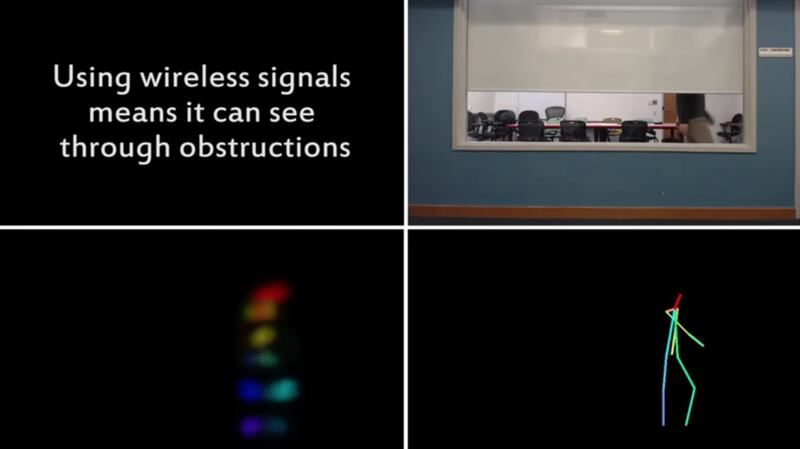It appears being being able to track people’s movements through walls is no longer in the realm of superheroes and sophisticated military radars.
Researchers at the Massachusetts Institute of Technology (MIT) have developed a system that uses artificial intelligence that can sense motion, even if the subject is hidden from view.
Called the RF-Pose, it involves using a neural network – a complex computer system modelled on the human brain – to analyse wireless radio signals (which can travel through obstructions) that bounce off people’s bodies and translate that into stick-like figures demonstrating the action.
The team wrote in their paper: “We leverage the fact that wireless signals in the Wi-Fi frequencies traverse walls and reflect off the human body.”
They say their technology could be useful in the healthcare industry – like for example monitoring neurological and muscular disorders like Parkinson’s, multiple sclerosis (MS) and muscular dystrophy.
It could also help elderly people live more independently while providing the added security of monitoring for falls, injuries and changes in activity patterns, they add.
To build the RF-Pose, the researchers trained their AI to recognise human motion by showing it thousands of images of people doing various activities (like walking, sitting, opening doors, etc) along with the corresponding radio signals and stick figures of those movements.
The system was then able to learn the association between the radio signal and the stick figures of the people in the scene and use the knowledge to recognise movements in real time.
The RF-Pose was demonstrated to be 83% reliable for identifying people in large groups, which the researchers say could be helpful in search-and-rescue operations.

The also add that tweaking their technology could allow 3D images that can detect even the slight of movements, such as a shaking hand.
For those concerned about privacy issues with regards to the technology, the team said they are developing a “consent mechanism” that would require performing specific movements before tracking kicks in.
MIT PhD student Hang Zhao added: “By using this combination of visual data and AI to see through walls, we can enable better scene understanding and smarter environments to live safer, more productive lives.”
The research is published in an open-access paper.








